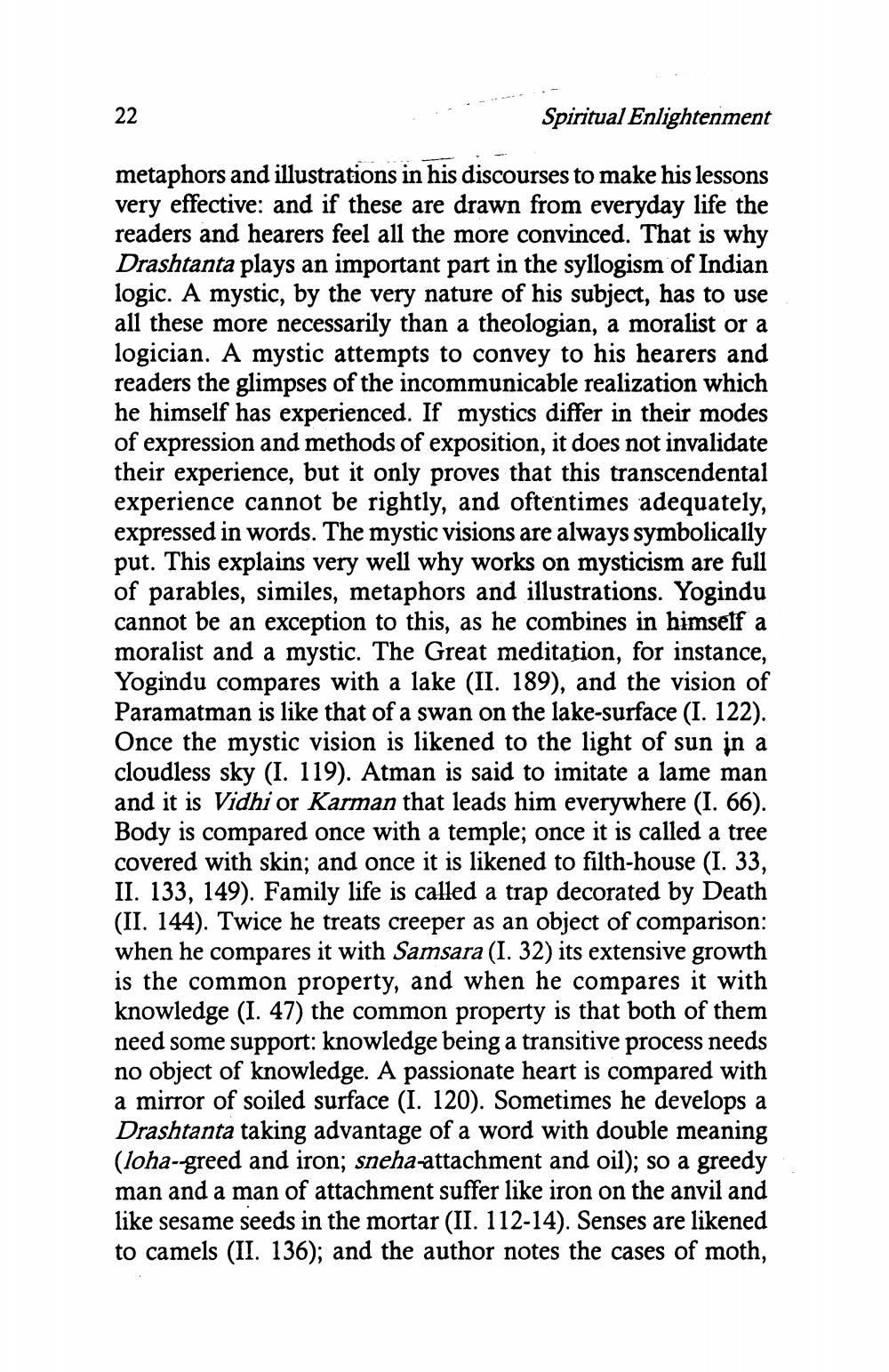________________
2
Spiritual Enlightenment
metaphors and illustrations in his discourses to make his lessons very effective: and if these are drawn from everyday life the readers and hearers feel all the more convinced. That is why Drashtanta plays an important part in the syllogism of Indian logic. A mystic, by the very nature of his subject, has to use all these more necessarily than a theologian, a moralist or a logician. A mystic attempts to convey to his hearers and readers the glimpses of the incommunicable realization which he himself has experienced. If mystics differ in their modes of expression and methods of exposition, it does not invalidate their experience, but it only proves that this transcendental experience cannot be rightly, and oftentimes adequately, expressed in words. The mystic visions are always symbolically put. This explains very well why works on mysticism are full of parables, similes, metaphors and illustrations. Yogindu cannot be an exception to this, as he combines in himself a moralist and a mystic. The Great meditation, for instance, Yogindu compares with a lake (II. 189), and the vision of Paramatman is like that of a swan on the lake-surface (I. 122). Once the mystic vision is likened to the light of sun in a cloudless sky (I. 119). Atman is said to imitate a lame man and it is Vidhi or Karman that leads him everywhere (I. 66). Body is compared once with a temple; once it is called a tree covered with skin; and once it is likened to filth-house (I. 33, II. 133, 149). Family life is called a trap decorated by Death (II. 144). Twice he treats creeper as an object of comparison: when he compares it with Samsara (I. 32) its extensive growth is the common property, and when he compares it with knowledge (I. 47) the common property is that both of them need some support: knowledge being a transitive process needs no object of knowledge. A passionate heart is compared with a mirror of soiled surface (I. 120). Sometimes he develops a Drashtanta taking advantage of a word with double meaning (loha-greed and iron; sneha-attachment and oil); so a greedy man and a man of attachment suffer like iron on the anvil and like sesame seeds in the mortar (II. 112-14). Senses are likened to camels (II. 136); and the author notes the cases of moth,




